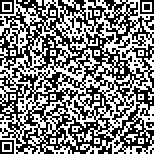| 引用本文: | 冯翔,赵占锋,赵宜楠,周志权.基于矩阵加权多模型融合的认知跟踪波形设计[J].哈尔滨工业大学学报,2018,50(5):30.DOI:10.11918/j.issn.0367-6234.201703159 |
| FENG Xiang,ZHAO Zhanfeng,ZHAO Yinan,ZHOU Zhiquan.Cognitive tracking waveform design based on matrix-weighted multiple model fusion[J].Journal of Harbin Institute of Technology,2018,50(5):30.DOI:10.11918/j.issn.0367-6234.201703159 |
|
| 摘要: |
| 针对机动目标状态跟踪问题,认知雷达能够调整发射端波形来获取持续、稳健目标跟踪信息.本文基于矩阵加权多模型融合思想引入一种新的面向机动目标跟踪的认知雷达自适应波形设计方法(Adaptive waveform design method based on Matrix-weighted Interacting Multiple Model, AMIMM).首先,利用多模型思路对机动目标状态进行建模,并考虑各模型目标状态估计及其误差协方差矩阵中元素间相关性,以矩阵加权融合方式代替传统概率加权方式,进而构造基于矩阵加权多模型信息融合的跟踪算法框架;然后,以多模型状态融合后的状态估计误差协方差矩阵为基准,利用特征值分解(EigenValue Decomposition, EVD)技术求取融合后状态估计误差协方差矩阵对应椭圆参数;最后,通过分数阶傅里叶变换(fractional Fourier transform, FrFT)来旋转雷达量测误差椭圆,使得量测误差椭圆与融合后目标状态估计误差椭圆正交,从而获得下一时刻认知波形参数,实现波形自适应捷变.仿真实验表明,与当前流行多种算法相比,本文所提算法能够进一步提高机动目标跟踪精度和稳健性.
|
| 关键词: 认知雷达 交互多模型 信息融合 矩阵加权 波形捷变 |
| DOI:10.11918/j.issn.0367-6234.201703159 |
| 分类号:TN958 |
| 文献标识码:A |
| 基金项目:国家自然科学基金(61371181) |
|
| Cognitive tracking waveform design based on matrix-weighted multiple model fusion |
|
FENG Xiang,ZHAO Zhanfeng,ZHAO Yinan,ZHOU Zhiquan
|
|
(School of Electrics and Information Engineering, Harbin Institute of Technology, Harbin 150001, China)
|
| Abstract: |
| To track maneuvering target, cognitive radar could adjust its transmitted waveforms to obtain some sustainable or robust information of target. We propose a novel adaptive waveform design method based on matrix-weighted Interacting Multiple Model fusion (AMIMM) for tracking maneuvering target. The target state is modeled via the multi-model idea, and the tracking framework is formulated by using the matrix-weighted multi-model fusion in lieu of probability-weighted way. The fused covariance matrix of state estimation is selected as the ellipse metric, and its ellipse parameters could be obtained by using EigenValue Decomposition (EVD). Finally, according to the fused covariance matrix-related ellipse parameters, the fractional Fourier transform (FrFT) is utilized to rotate the measurement error ellipse to make them orthogonal to each other, and obtain the adaptive waveforms. Simulation results show that compared with several current algorithms, our algorithm could further improve the tracking accuracy and robustness.
|
| Key words: cognitive radar interacting multiple model information fusion matrix weighted waveform agile |







